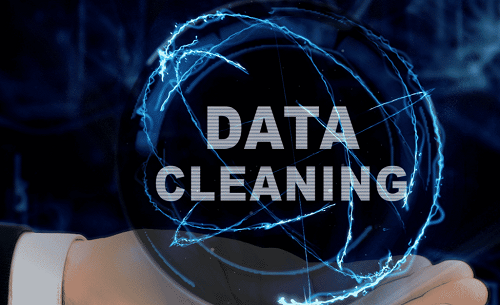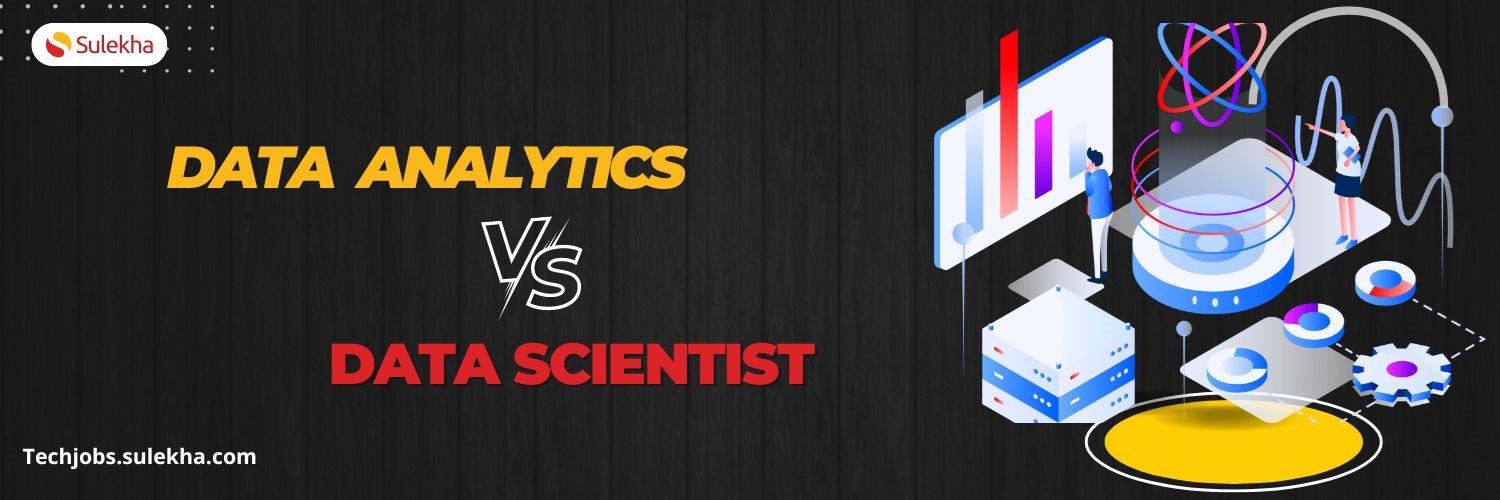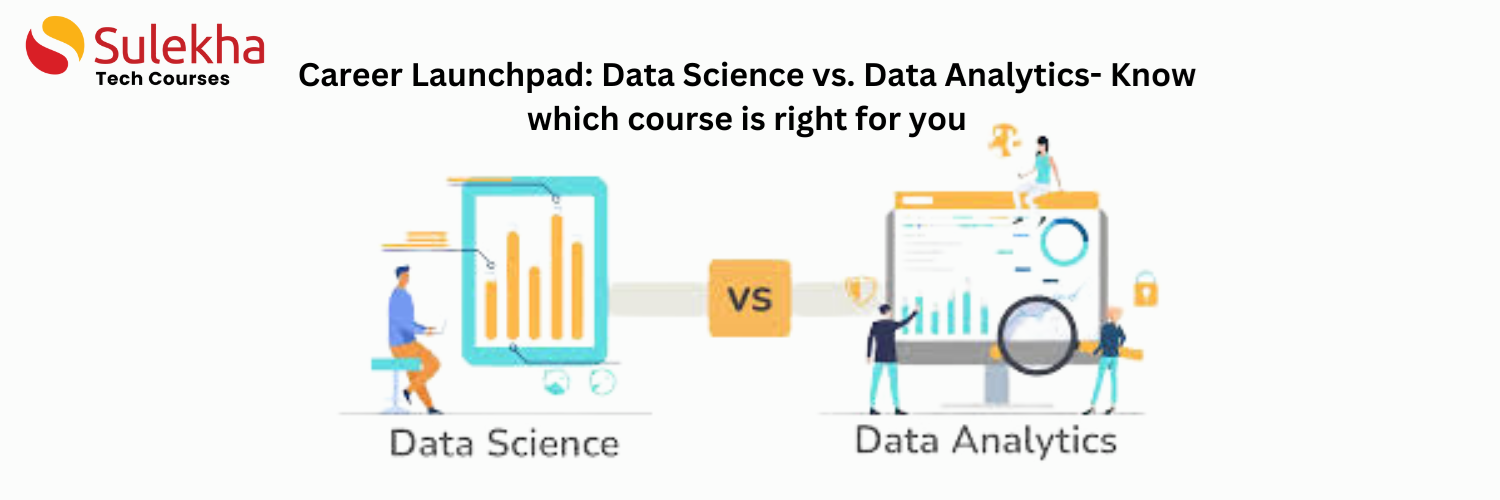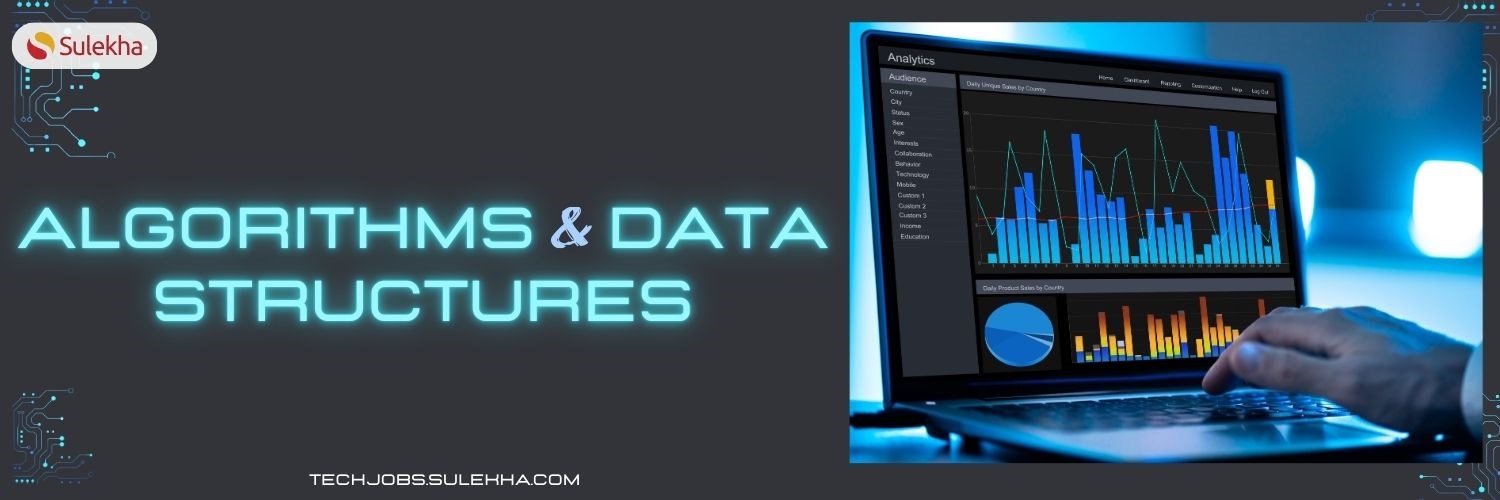Data Cleaning and Preparation: The Foundation of Data Science
Data Cleaning and Preparation: The Foundation of Data Science
What is data science?
Data science has grown in popularity in recent years as a tool to help organizations make better decisions through the analysis of data. The foundation of data science is the ability to mine data, or extract useful information from large data sets. Data mining is a process of identifying patterns and trends in data sets in order to make predictions or recommendations.
Data science is used in a variety of industries, including healthcare, finance, retail, and manufacturing. In healthcare, data science is used to predict patient outcomes and track changes over time. Financial analysts use data science to predict stock prices and analyze company’s finances. Retailer industry use data science to forecast consumer behavior and make decisions about product marketing and to predict buying behaviour. Manufacturing companies use data science to optimize production processes and identify new ways of cost reduction.
Data cleaning and preparation
As data sets grow in size and complexity, it becomes more and more important to carefully curate them before analysis. The cleaning of data is a crucial step in any data analysis, and can make the difference between a successful analysis and a complete failure. Data cleaning is an important step in any analysis process , and it's important to be systematic and thorough in order to ensure a successful outcome. If you ever find yourself struggling with data cleaning, don't hesitate to reach out to a data analyst for help. They will have the expertise and tools needed to clean your data correctly and efficiently. This process can be extremely time-consuming and challenging, but it is essential for doing any kind of data analysis. There are a few different steps involved in data cleaning and preparation:
1. Collecting data: This is the first step in any data analysis project. You need to collect data from a variety of sources, including surveys, experiments, and databases. There are a few ways to collect data during the data cleaning process:
-Use a data cleaning software: This type of software can automate many of the data cleaning tasks, such as identifying and removing duplicate data.
-Use a data scraping tool: This type of software can help you collect data from web pages or other sources. This is useful if you want to collect large amounts of data quickly and without much input from you.
-Look for patterns: One way to find duplicate or erroneous data is to look for patterns. For example, if you are cleaning up customer data, you might look for similar customers with the same name, address, or email address. You could also look for patterns in the data itself, such as numbers that are repeated frequently or unusual values.
-Keep a record of your findings: Once you have cleaned the data, make sure to keep a record of what you did and what results you achieved. This will help you to improve your data cleaning process next time around.
2 . Identifying and correcting errors: Data can contain errors, which can affect the accuracy of your analysis. You need to identify and correct these errors before you can use your data in any meaningful way. Some common methods for identifying errors in data cleaning include visual inspection, manual checking, and using software to check for errors. Once errors are identified, they can be corrected manually or with the help of software. Some common methods for correcting errors include deleting invalid data, imputing missing data, and standardizing data formats. It is important to remember that errors can occur at any stage of the data cleaning process, and it is always best to err on the side of caution when cleaning data. Skipping a step or making an incorrect correction may lead to incorrect results, so it is crucial to be vigilant in checking for and correcting errors throughout the data cleaning process.
3. formatting the data: Once you have collected your data, it needs to be formatted in a way that is compatible with analysis software. This includes converting numbers into strings, sorting items alphabetically, and removing duplicate entries.
4. cleaning the data: Once the data is formatted , it needs to be cleaned. This includes removing any errors, eliminating any information that is not relevant to your analysis, and reducing the number of rows and columns in the data set.
5. preparing the data for analysis: Once the data is clean and ready for analysis, you need to prepare it for use with your chosen software. This includes importing the data into your software, cleaning and clarifying it as necessary, and exploring its features.
Data cleaning and preparation is a time -consuming process, but it is necessary if you want to use your data in a meaningful way.
Benefits of data cleaning
There are many benefits to data cleaning, including:
- improved data quality
- reduced costs
- improved decision making
- improved efficiency
- better data-driven insights
- improved customer satisfaction.
Data cleaning is essential for any organization that relies on data to make decisions. By ensuring that data is accurate, complete, and consistent, organizations can trust that their decision making is based on the most up-to-date and reliable information available. This leads to better decisions and stronger business relationships.
Moreover, data cleaning can also save businesses money in the long run. By eliminating erroneous data, organizations can reduce the cost of maintaining and updating their systems. This reduction in costs can be passed on to customers through lower prices or improved service quality. In addition, by reducing the amount of data that needs to be processed, organizations can speed up their decision-making processes and improve their overall efficiency. This increased efficiency often leads to increased profits for businesses.
Use of data cleaning process
- In the real world, data cleaning is often used to clean up data sets before they are used for analysis. This can help to improve the accuracy of the results of the analysis, and make the data more useful for drawing conclusions. Data cleaning can also be used to identify and correct errors in data sets that may have caused them to be inaccurate in the first place. By cleaning up your data before you use it, you can ensure that it is as accurate as possible.
- There are many ways in which data cleaning is used in the real world. For example, when a company wants to merge two databases, data cleaning is necessary to ensure that the data is consistent and accurate. Another example is when a company wants to migrate its data to a new platform. Data cleaning is necessary to ensure that the data goes into the new platform correctly and without errors.
- Data cleaning can also be used for fraud detection. For example, if a company receives a large number of suspicious transactions, data cleaning can help identify which transactions are fraudulent. This information can then be used to stop the fraudulent activity before it becomes too big.
Challenges associated with data cleaning
There are a number of challenges involved in data cleaning, including:
- Ensuring that all data is complete and accurate
- identifying and correcting any errors in the data
- dealing with missing data
- dealing with outliers
- ensuring that the data is consistent and formatted in a way that is easy to work with.
These challenges can be time-consuming and difficult to overcome, but it is important to ensure that the data is clean before proceeding with any further analysis . If the data is not clean, it can lead to incorrect conclusions being drawn and a loss of credibility for the data source. Therefore, it is important to take care when cleaning data so that all of the errors are identified and corrected, and the results are consistent and easy to work with.
There are a few things to keep in mind when cleaning and preparing data for analysis. First, make sure that all of your data is complete and accurate. Incomplete data can lead to inaccurate results. Second, ensure that your data is in a format that can be easily analyzed. This may require reformat ting your data into a specific format, depending on the analysis you are performing. Finally, be sure to check for any errors in your data before beginning your analysis. Any errors can lead to incorrect results.
Want to learn data cleaning?
In order to learn data cleaning and preparation, it is important to first understand the basics of working with data. This includes understanding how to import data into a program, how to manipulate it, and how to export it. Once you have a firm understanding of these basics, you can then move on to learning more specific techniques for data cleaning and preparation.
Conclusion
In conclusion, it is important to clean data before conducting any sort of analysis because otherwise the results could be negative. It involves removing invalid or incorrect data, filling in missing values, and dealing with outliers. Once the data is clean, it can then be analyzed to draw conclusions or make predictions. Data cleaning is an important step in any data analysis process and should not be skipped. Otherwise, the results of the analysis could be inaccurate or misleading.
Data Science: Unleashing the Power of Data for Insightful Decision-Making
Find a course provider to learn Data Science
Java training | J2EE training | J2EE Jboss training | Apache JMeter trainingTake the next step towards your professional goals in Data Science
Don't hesitate to talk with our course advisor right now
Receive a call
Contact NowMake a call
+1-732-338-7323Take our FREE Skill Assessment Test to discover your strengths and earn a certificate upon completion.
Enroll for the next batch
Data Science-Python-ML-AI-Deep Learning (Hands-on Training)
- Dec 15 2025
- Online
Data Science-Python-ML-AI-Deep Learning (Hands-on Training)
- Dec 16 2025
- Online
Data Science-Python-ML-AI-Deep Learning (Hands-on Training)
- Dec 17 2025
- Online
Data Science-Python-ML-AI-Deep Learning (Hands-on Training)
- Dec 18 2025
- Online
Data Science-Python-ML-AI-Deep Learning (Hands-on Training)
- Dec 19 2025
- Online
Related blogs on Data Science to learn more

Confidence Intervals & Hypothesis Tests: The Data Science Path to Generalization
Learn how confidence intervals and hypothesis tests turn sample data into reliable population insights in data science. Understand CLT, p-values, and significance to generalize results, quantify uncertainty, and make evidence-based decisions.

Why Pursue Data Science Training?
Empower your career in a data-driven world. Learn why data science training is crucial for high-demand jobs, informed decisions, and staying ahead with essential skills.

Overview of data analytics VS data scientist
"Discover the key differences between data analytics and data science, explore top courses, job roles, salary expectations, and essential tools to build a successful career in these fields."

Career Launchpad: Data Science vs. Data Analytics- Know which course is right for you
Discover the key differences between Data Science and Data Analytics to choose the right course for your career. Explore roles, curriculum, salaries, and future prospects in this comprehensive guide.

What are Algorithms?
Discover the fundamentals of algorithms and data structures, their characteristics, types, and their crucial role in problem-solving and programming efficiency.

TEN ENTRY LEVEL JOBS IN IT FOR FRESHERS
Explore ten entry-level IT jobs for freshers, including roles like Help Desk Technician and Cloud Engineer, that require no prior experience but foundational IT knowledge. Discover exciting career paths in the technology sector that offer growth and

What is statistics?
Discover the basics of statistics, including its major types—descriptive and inferential—and their importance in data analysis and prediction.

Twelve High Paying Jobs in New York City
Uncover twelve high-paying jobs in New York City, including roles like data scientist and public relations manager. Learn about their responsibilities and salary ranges.

What is Linear Algebra?
Discover the importance of linear algebra in various fields like data science, economics, and medicine. Understand its applications and why it's an essential skill for students and professionals alike.

TEN ENTRY LEVEL JOBS IN IT FOR FRESHERS
Discover ten entry-level IT jobs perfect for freshers, offering exciting career opportunities and a pathway to success in the tech industry.
Latest blogs on technology to explore

From Student to AI Pro: What Does Prompt Engineering Entail and How Do You Start?
Explore the growing field of prompt engineering, a vital skill for AI enthusiasts. Learn how to craft optimized prompts for tools like ChatGPT and Gemini, and discover the career opportunities and skills needed to succeed in this fast-evolving indust

How Security Classification Guides Strengthen Data Protection in Modern Cybersecurity
A Security Classification Guide (SCG) defines data protection standards, ensuring sensitive information is handled securely across all levels. By outlining confidentiality, access controls, and declassification procedures, SCGs strengthen cybersecuri

Artificial Intelligence – A Growing Field of Study for Modern Learners
Artificial Intelligence is becoming a top study choice due to high job demand and future scope. This blog explains key subjects, career opportunities, and a simple AI study roadmap to help beginners start learning and build a strong career in the AI

Java in 2026: Why This ‘Old’ Language Is Still Your Golden Ticket to a Tech Career (And Where to Learn It!
Think Java is old news? Think again! 90% of Fortune 500 companies (yes, including Google, Amazon, and Netflix) run on Java (Oracle, 2025). From Android apps to banking systems, Java is the backbone of tech—and Sulekha IT Services is your fast track t

From Student to AI Pro: What Does Prompt Engineering Entail and How Do You Start?
Learn what prompt engineering is, why it matters, and how students and professionals can start mastering AI tools like ChatGPT, Gemini, and Copilot.

Cyber Security in 2025: The Golden Ticket to a Future-Proof Career
Cyber security jobs are growing 35% faster than any other tech field (U.S. Bureau of Labor Statistics, 2024)—and the average salary is $100,000+ per year! In a world where data breaches cost businesses $4.45 million on average (IBM, 2024), cyber secu

SAP SD in 2025: Your Ticket to a High-Flying IT Career
In the fast-paced world of IT and enterprise software, SAP SD (Sales and Distribution) is the secret sauce that keeps businesses running smoothly. Whether it’s managing customer orders, pricing, shipping, or billing, SAP SD is the backbone of sales o

SAP FICO in 2025: Salary, Jobs & How to Get Certified
AP FICO professionals earn $90,000–$130,000/year in the USA and Canada—and demand is skyrocketing! If you’re eyeing a future-proof IT career, SAP FICO (Financial Accounting & Controlling) is your golden ticket. But where do you start? Sulekha IT Serv

Train Like an AI Engineer: The Smartest Career Move You’ll Make This Year!
Why AI Engineering Is the Hottest Skillset Right Now From self-driving cars to chatbots that sound eerily human, Artificial Intelligence is no longer science fiction — it’s the backbone of modern tech. And guess what? Companies across the USA and Can

Confidence Intervals & Hypothesis Tests: The Data Science Path to Generalization
Learn how confidence intervals and hypothesis tests turn sample data into reliable population insights in data science. Understand CLT, p-values, and significance to generalize results, quantify uncertainty, and make evidence-based decisions.